Key takeaways:
- Student-centered learning empowers students to take an active role in their education, fostering independence and critical thinking.
- Engagement in music education enhances ownership, creativity, and deeper emotional connections, transforming the learning experience.
- Music education benefits students academically and socially, developing skills like concentration, teamwork, and emotional intelligence.
- Collaboration and peer teaching encourage creativity and personal growth, creating a supportive classroom environment where students thrive.
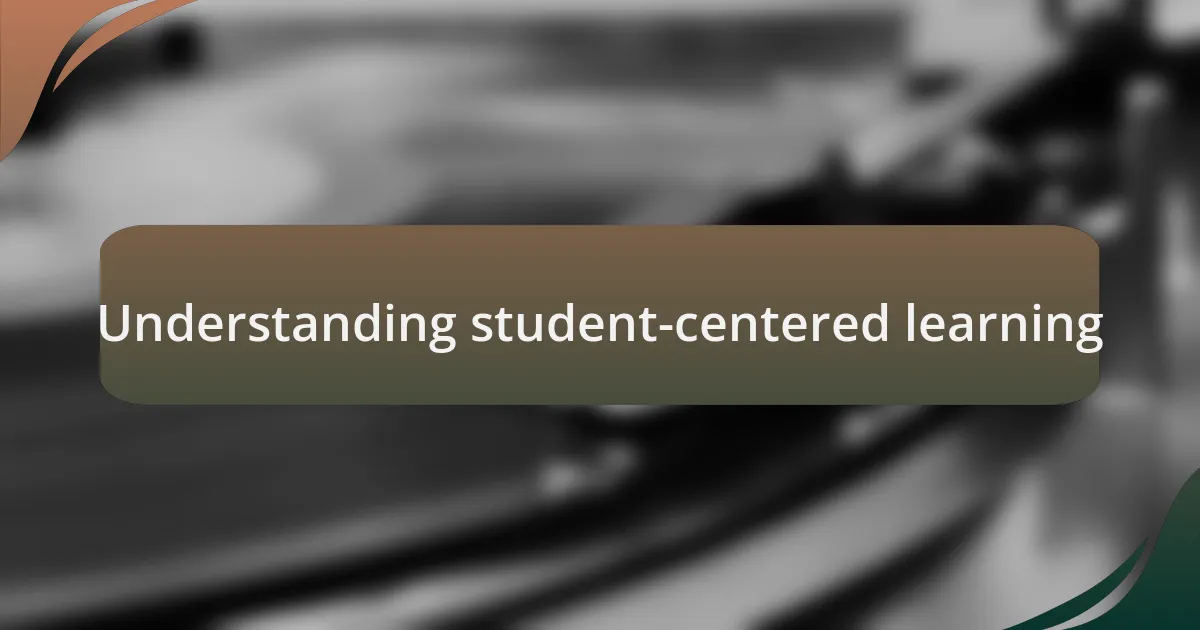
Understanding student-centered learning
Student-centered learning shifts the focus from the instructor to the students, allowing them to take an active role in their education. I remember a time when I asked my class to choose a piece they wanted to explore, and the excitement was palpable. It’s incredible to see how their choice sparked enthusiasm and innovation, transforming the usual routine into a vibrant learning experience.
In my experience, this approach fosters independence and critical thinking. Have you ever noticed how students tend to engage more deeply when they are invested in their learning? I found that when learners are allowed to express their preferences and curiosities, they not only absorb information but also connect with it on a personal level. This connection can lead to a lifelong passion for music.
Understanding student-centered learning means recognizing that each learner has unique needs and motivations. I often ask myself, how can I facilitate an environment where my students feel valued and understood? It’s about nurturing their individuality and encouraging them to share their ideas, which ultimately enriches the entire classroom dynamic. When students know their voices matter, magic happens; they become more than just listeners—they become creators.
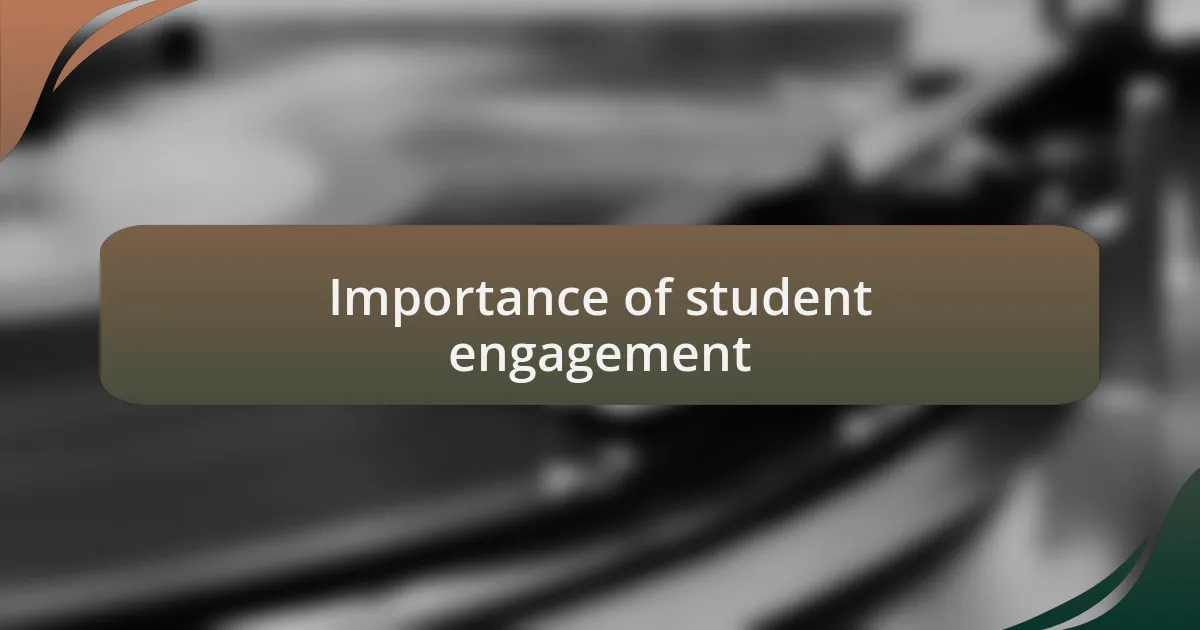
Importance of student engagement
Engagement is the heartbeat of effective learning. I vividly recall a particular group project where students collaborated to create their own compositions. The energy in the room was electric; they weren’t just participating—they were fully immersed in shaping their musical ideas. This kind of involvement is critical because when students actively engage, they develop a sense of ownership over their work, which enhances both their learning and enjoyment.
Have you ever observed how a student’s enthusiasm can spark creativity? In one instance, a shy student surprised us all during a class jam session by leading the group with confidence. This not only showcased their growth but also encouraged others to step outside their comfort zones. When students are engaged, they inspire one another, creating a dynamic classroom environment where everyone feels empowered to contribute.
Moreover, engagement promotes deeper understanding. I often think about how learning in a passive setting can leave students feeling detached. When I invite students to explore themes that resonate with them personally, I see a transformation: they begin to connect concepts not just academically but emotionally. This emotional investment can solidify their passion for music, shaping their educational journey in profound ways.
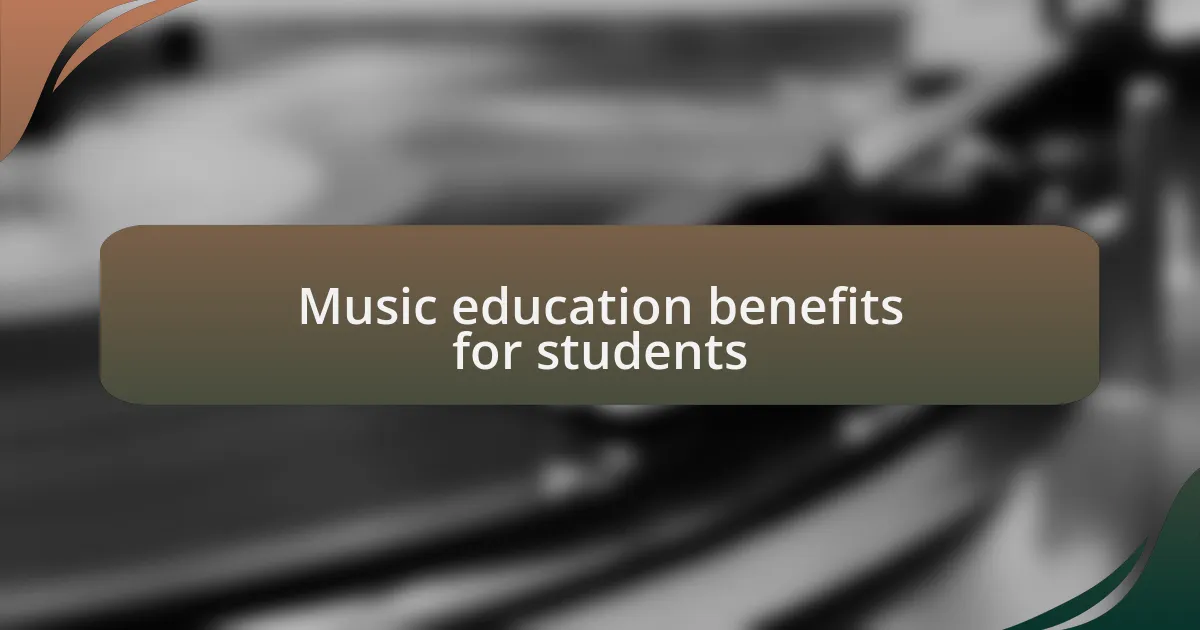
Music education benefits for students
Music education offers an array of benefits that extend far beyond simply learning to play an instrument or read notes. I remember one student who, through our music program, transformed not only musically but academically. They developed better concentration and discipline, skills that directly impacted their performance in other subjects. Isn’t it fascinating how immersing oneself in music can enhance cognitive abilities across the board?
Additionally, collaboration in music education fosters essential social skills. During ensemble rehearsals, I noticed shy students gradually emerge from their shells, sharing ideas and building friendships in the process. Watching them communicate and support one another to achieve a common goal reminds me of how music serves as a universal language—one that cultivates teamwork and empathy.
Furthermore, music education enriches emotional development. I once had a student who used songwriting as an outlet to express their feelings about personal challenges. Not only did they create beautiful music, but they also found a therapeutic way to cope with their experiences. This connection between music and emotional intelligence highlights the power of creative expression in helping students navigate their feelings and build resilience. How often do we overlook the profound impact that music can have on a child’s emotional landscape?
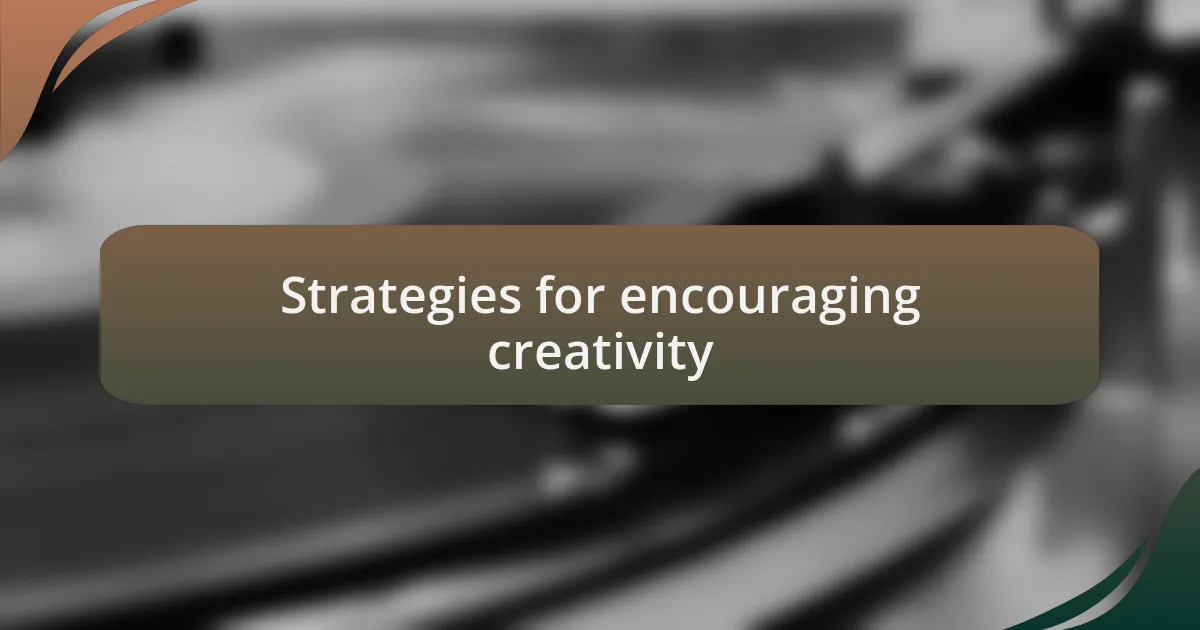
Strategies for encouraging creativity
To encourage creativity in music education, I often implement improvisation sessions in the classroom. I remember a time when I set up an exercise where students could express their emotions through spontaneous melody creation. The energy in the room shifted dramatically as students began to experiment with sounds, showcasing their unique personalities. Isn’t it captivating to witness how free expression can illuminate a new side of a student?
Another effective strategy is integrating technology into our lessons. I once introduced a digital audio workstation to my class, allowing students to compose their own tracks. The excitement was palpable as they explored layering sounds and mixing different genres. This not only enhances their technical skills but also bridges the gap between traditional music and contemporary practices. How can we resist the allure of blending creativity with technology in today’s learning environment?
I’ve also found that encouraging students to write their own lyrics fosters a deep sense of ownership and creativity. In one project, students penned lyrics that reflected their personal stories and experiences. The pride they felt in sharing their work was incredible. By giving them the space to express themselves, I witnessed a remarkable boost in their confidence. Why do we sometimes underestimate the power of personal storytelling in music education?
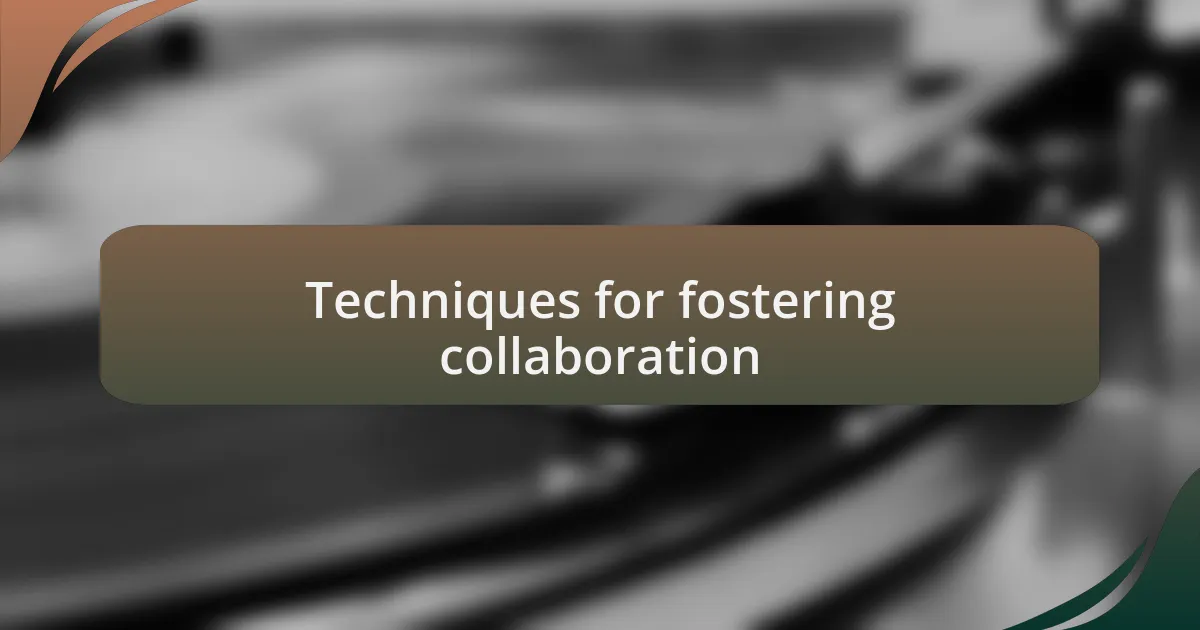
Techniques for fostering collaboration
To foster collaboration among students, I often utilize group projects that encourage teamwork and shared creativity. I remember a time when I divided the class into small bands, each tasked with reinterpreting a well-known song. The discussions that emerged were vibrant, as students debated arrangements and instrumentation. Listening to them navigate their ideas reminded me of the beauty of collective artistic expression. Isn’t it amazing how collaboration can spark creativity in ways that solitary efforts cannot?
Another technique I’ve found effective is peer teaching, where students take turns sharing their skills with one another. For instance, I unleashed a flurry of excitement when a student skilled in guitar led a workshop for their classmates. Watching the others engage and learn from their peer was truly inspiring. How often do we recognize that students can be some of the best teachers for each other?
I also facilitate collaborative composition sessions where students build on one another’s ideas in real-time. During one memorable class, I set up a round-robin style where students would contribute a measure of music before passing it along. The energy was infectious, and each new addition breathed fresh life into the piece. It made me reflect on how music, much like life, flourishes through connection and shared inspiration. Don’t you think that these experiences help students form meaningful relationships while honing their musicality?
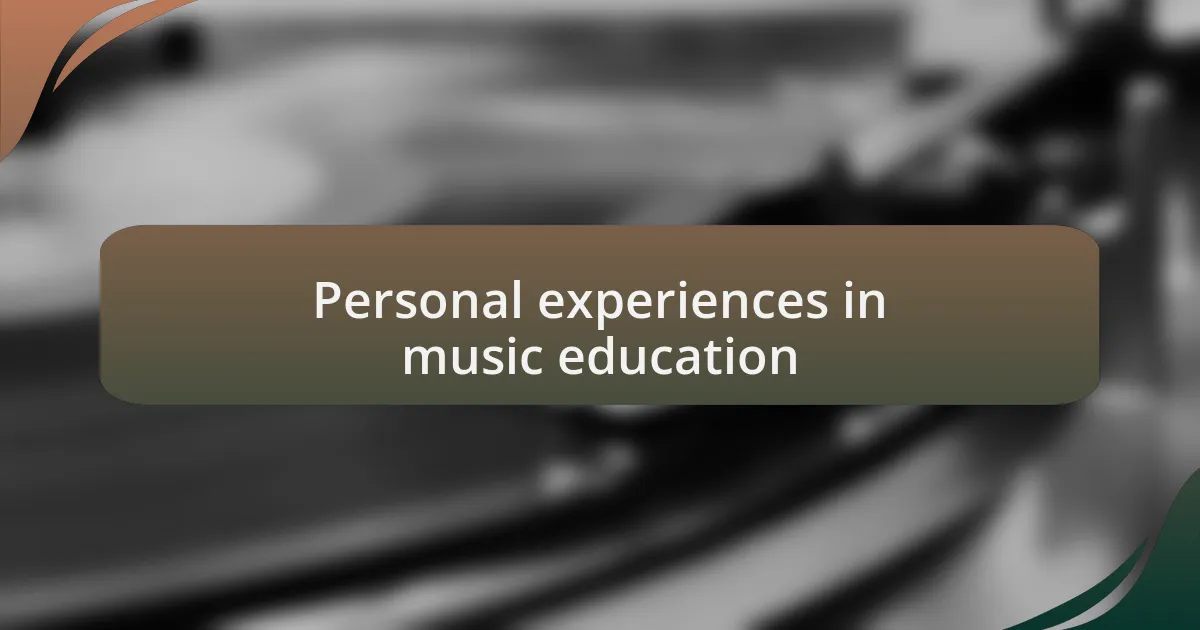
Personal experiences in music education
In my journey through music education, I recall a transformative experience when I introduced a student-led concert. Each student had the opportunity to choose a piece they were passionate about and perform it for their peers. Witnessing their nerves turn into excitement as they stepped on stage was a heartwarming reminder of the power of personal expression in music. Have you ever seen how a platform can empower students to shine in their own light?
Another memorable instance involved a student who struggled with traditional learning methods. Instead of following the standard curriculum, I encouraged them to explore composition using software. The spark in their eyes as they created original music from scratch was unforgettable. It really hit me that embracing each student’s uniqueness can lead to extraordinary outcomes. Isn’t it incredible to witness a student’s growth when we provide them the freedom to express themselves?
Lastly, I remember a particularly inspiring session where we focused on improvisation. As students took turns experimenting with melodies, I noticed a palpable shift in the classroom atmosphere; the fear of making mistakes faded, replaced by a playful curiosity. Encouraging this kind of exploration highlights for me the importance of a safe space in music education. How often do we forget that mistakes can lead to the most beautiful discoveries?
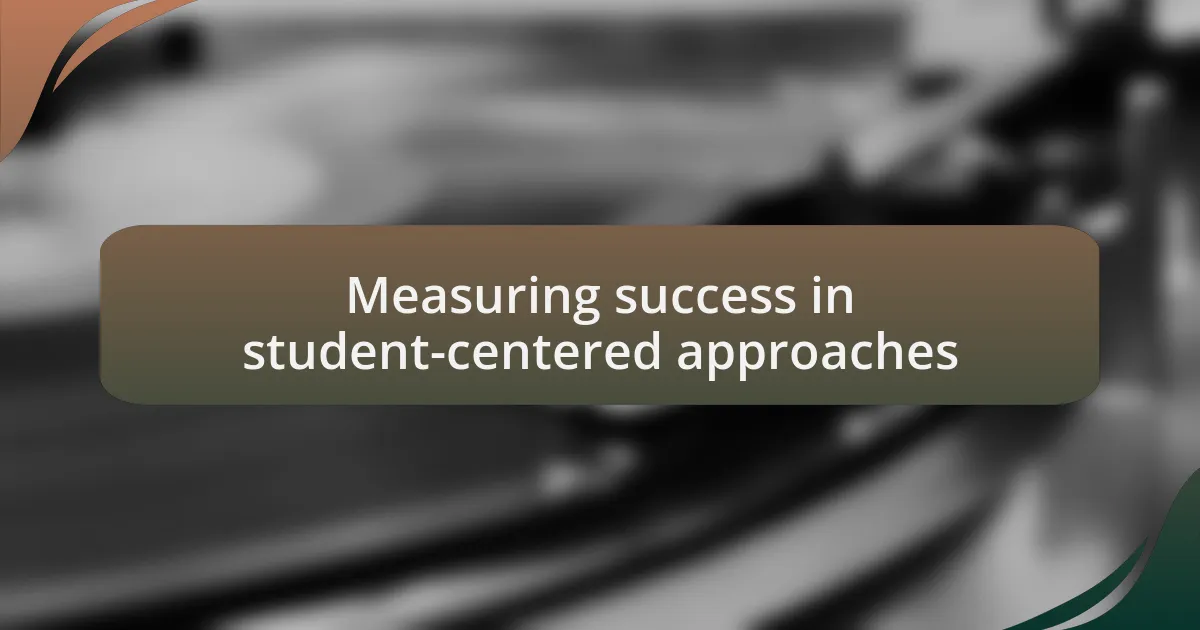
Measuring success in student-centered approaches
Measuring success in a student-centered approach goes beyond traditional grading systems. I’ve discovered that observing student engagement and enthusiasm is a far more telling indicator of success. For instance, during a project where students collaborated to create a music video, the excitement and teamwork they exhibited showcased their investment in learning. Don’t you find it fascinating how creativity can drive commitment?
Another meaningful way I assess success is through self-reflection. After a weekly lesson, I often ask students to jot down what resonated with them most. One time, a student wrote about the joy of composing his song, sharing how he felt empowered by the ownership of his learning experience. This feedback not only helps me tailor future lessons but also reveals how deeply personal experiences in music can enhance their motivation. Don’t you think a little introspection can unveil so much about a student’s journey?
Lastly, I often encourage peer feedback during performances, fostering a supportive community. I recall a student who initially struggled with a piece, but when her classmates offered encouragement, she transformed her confidence. Watching her grow from a timid performer to someone who embraced constructive critiques made me realize that success in a student-centered environment is measured by the relationships built and the resilience fostered among students. Isn’t it inspiring how collaboration can create a fertile ground for personal growth?